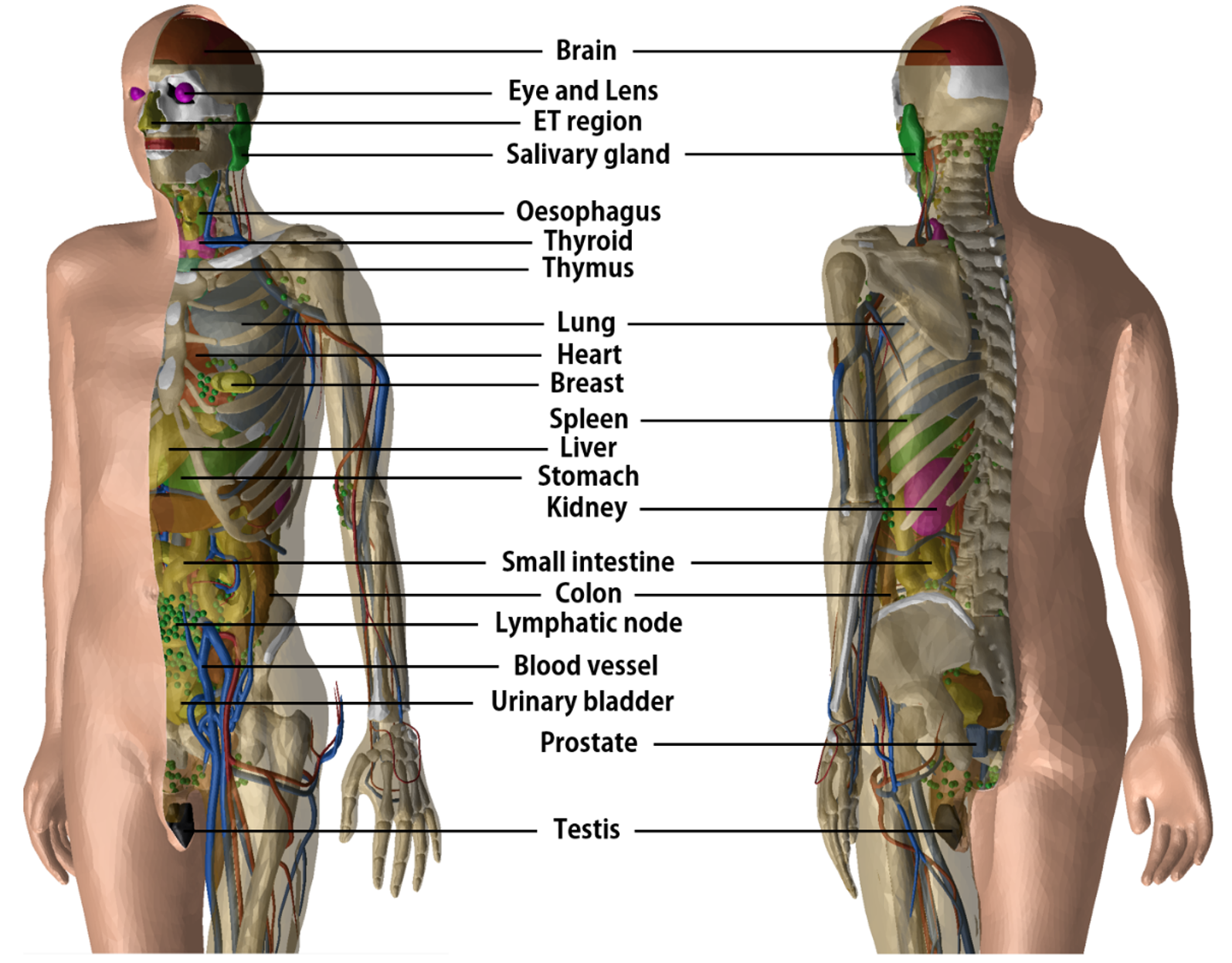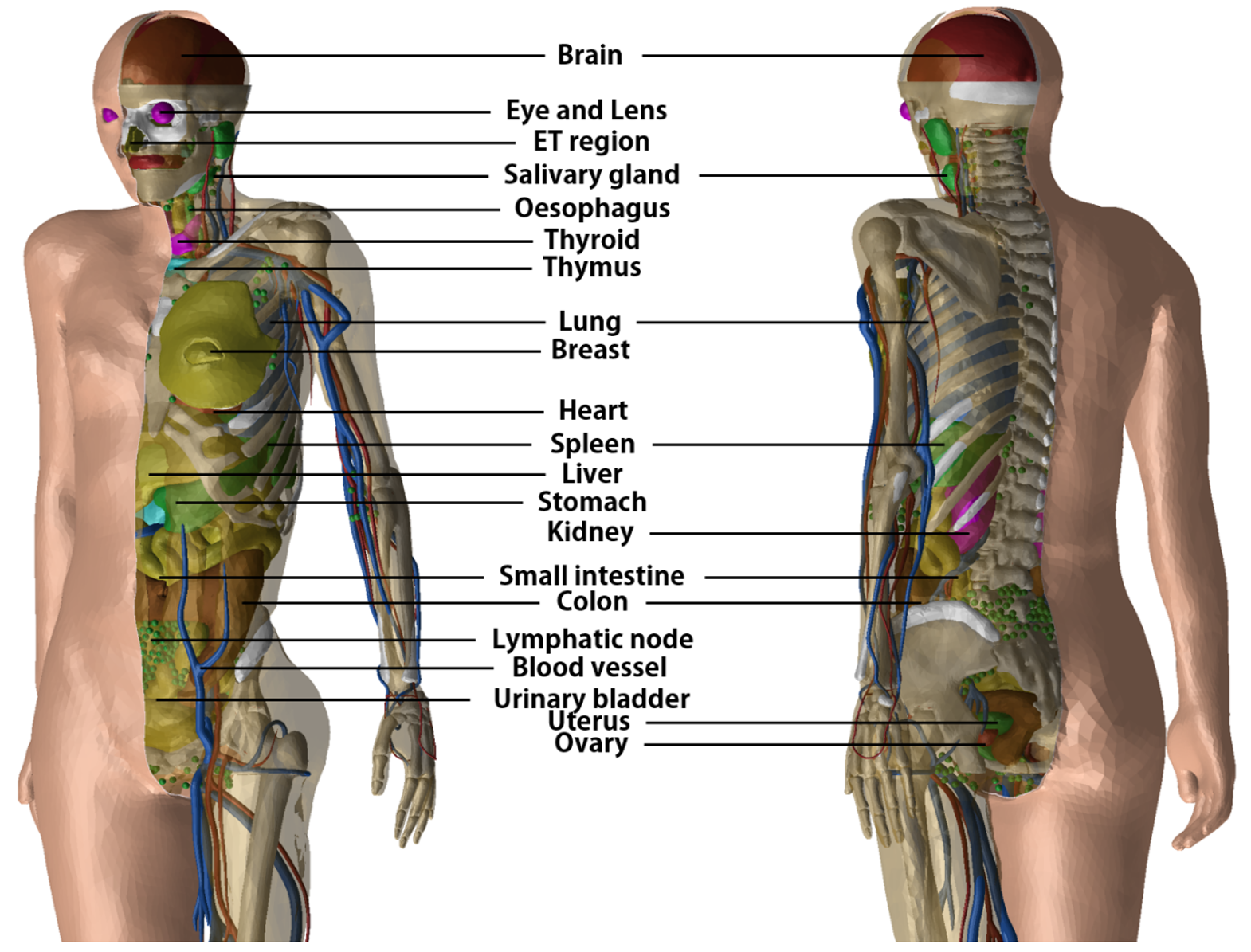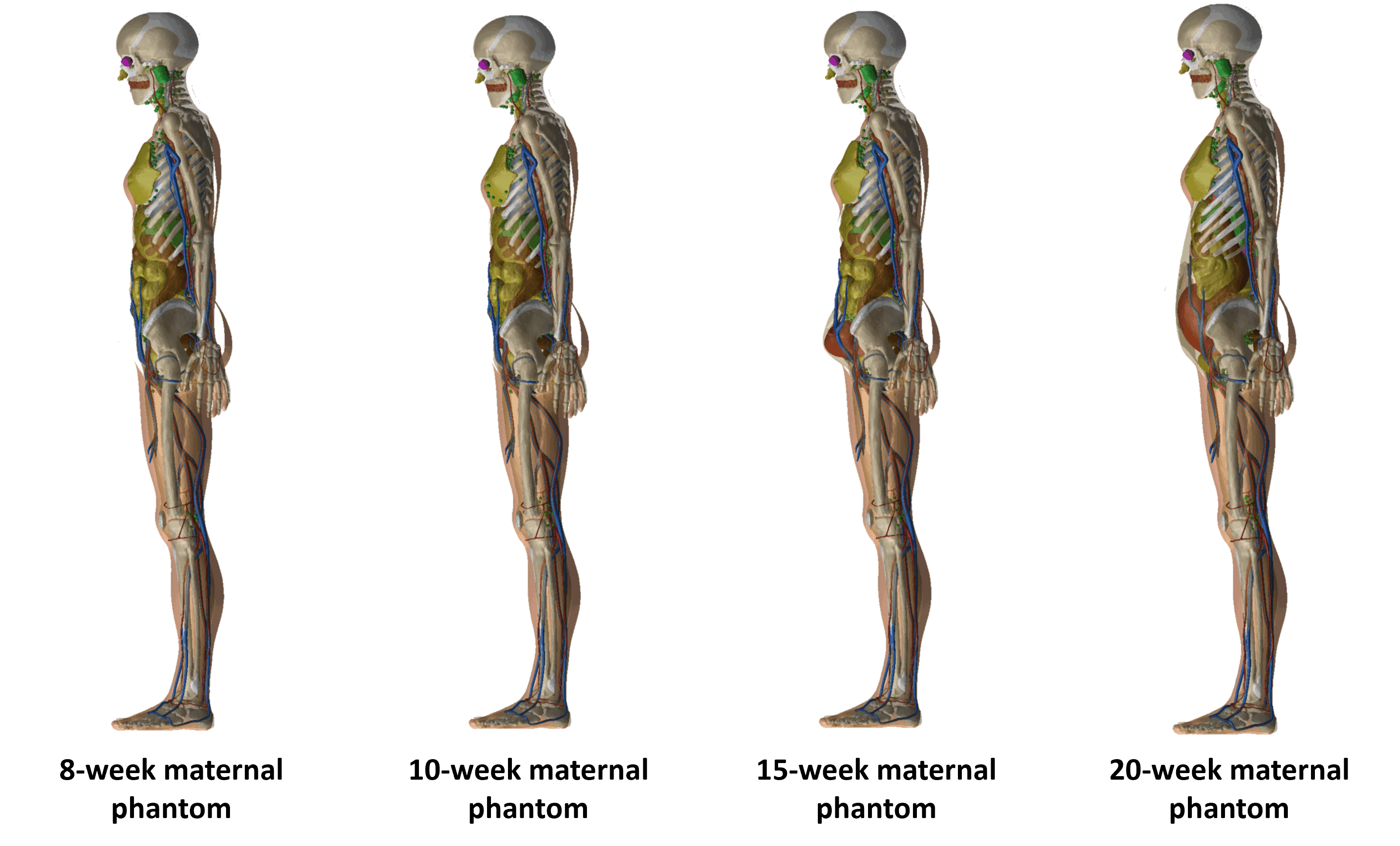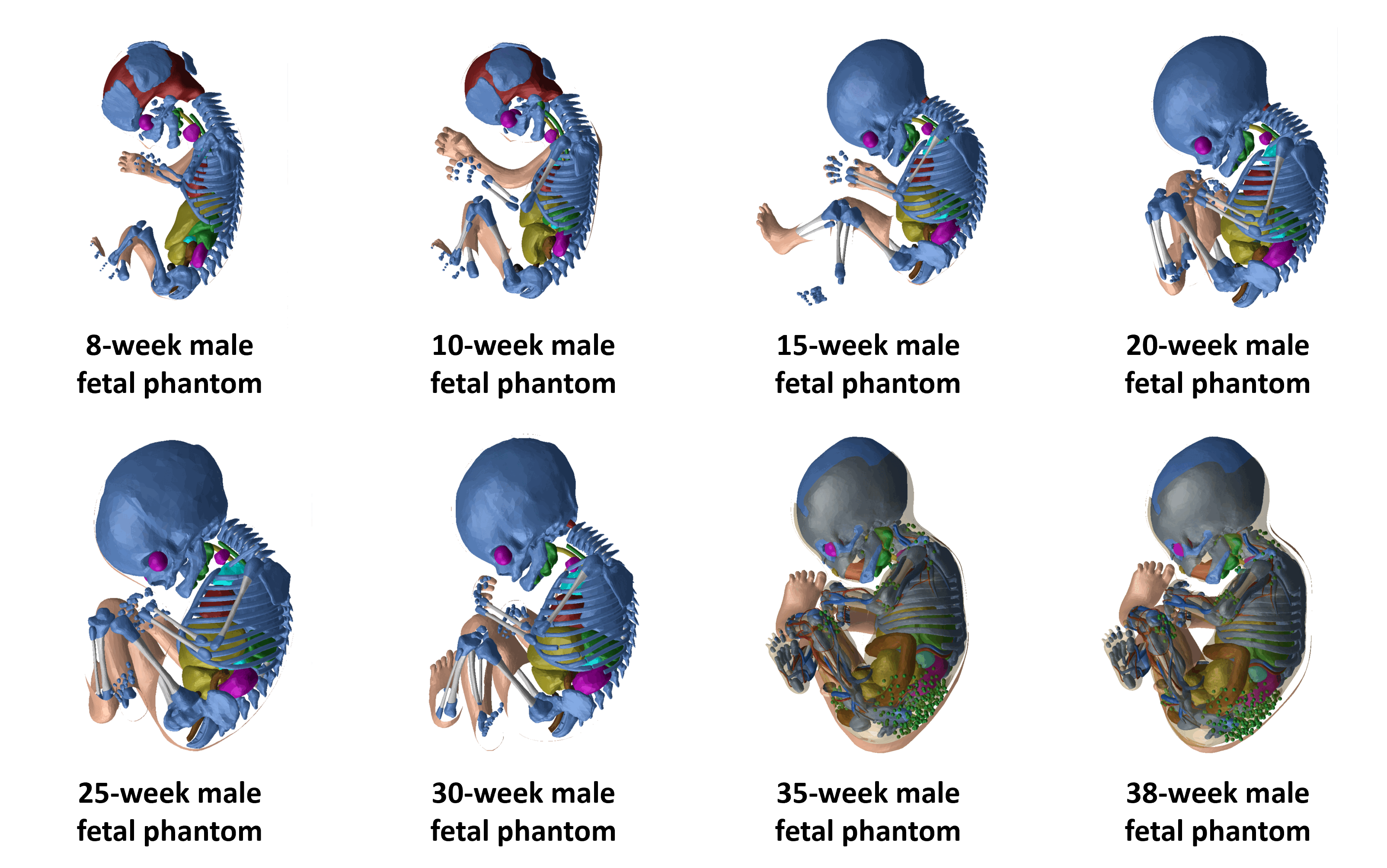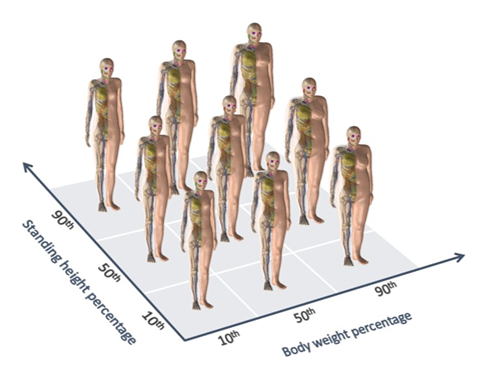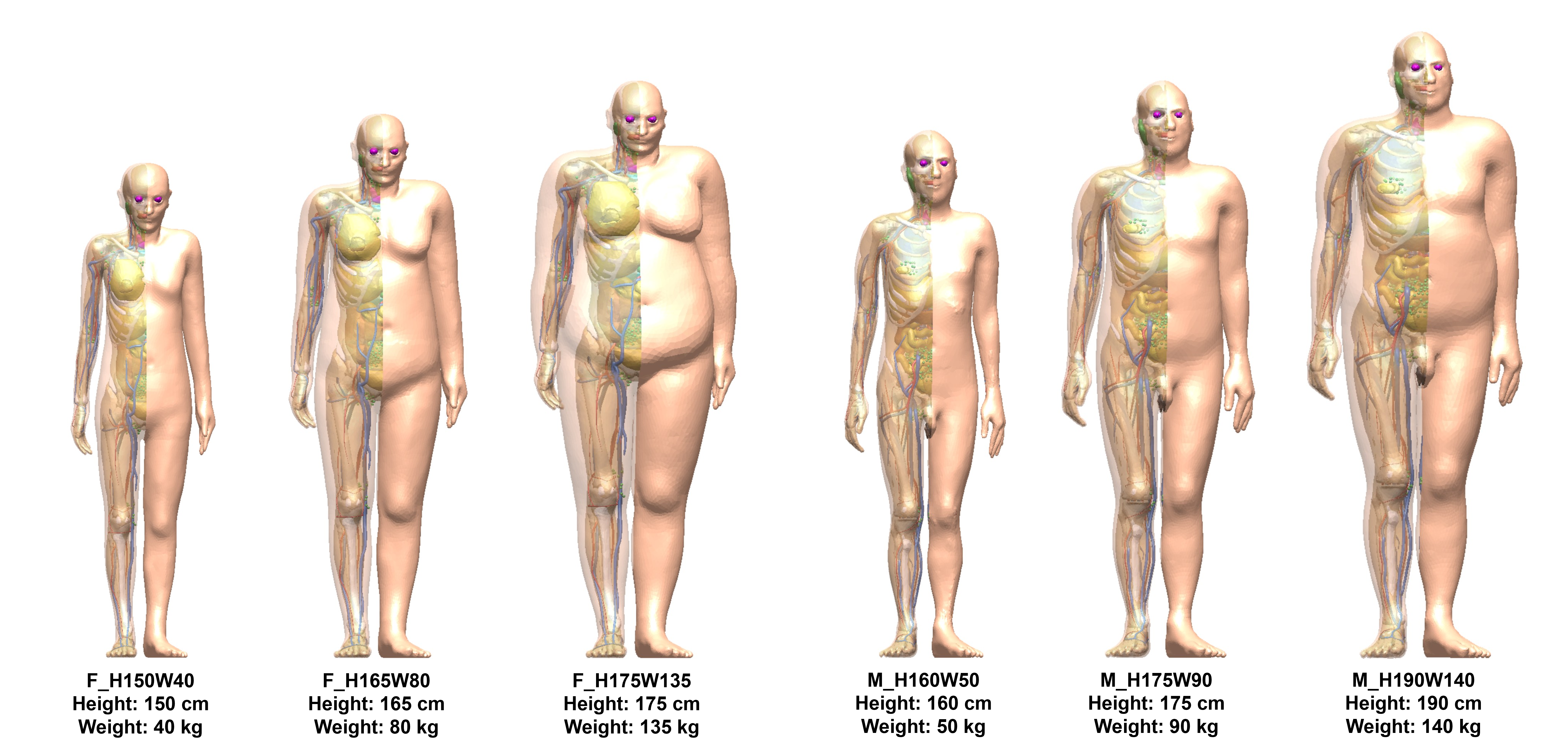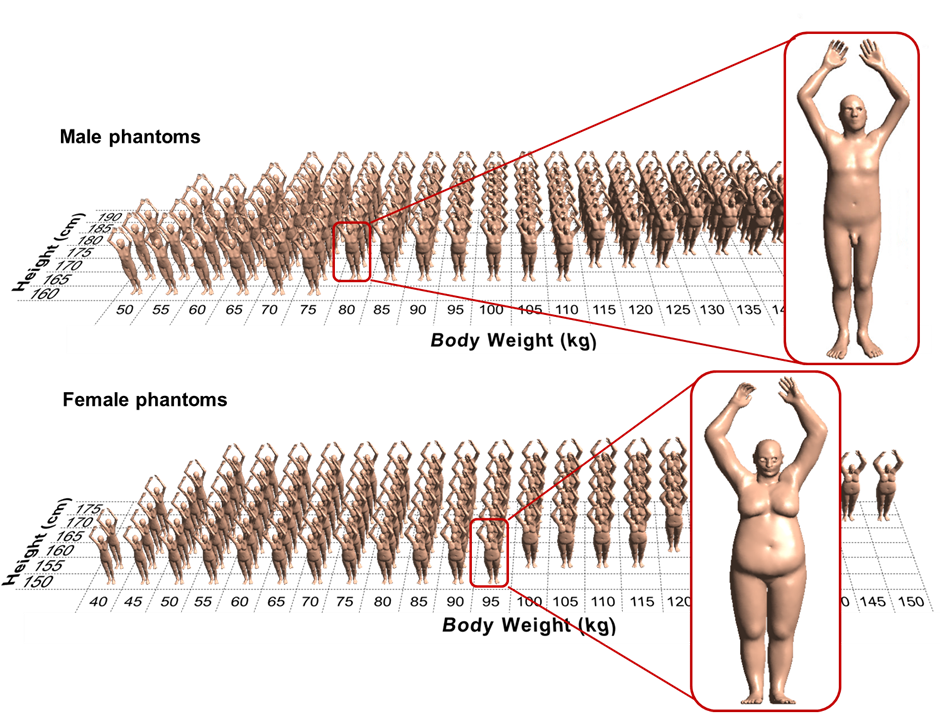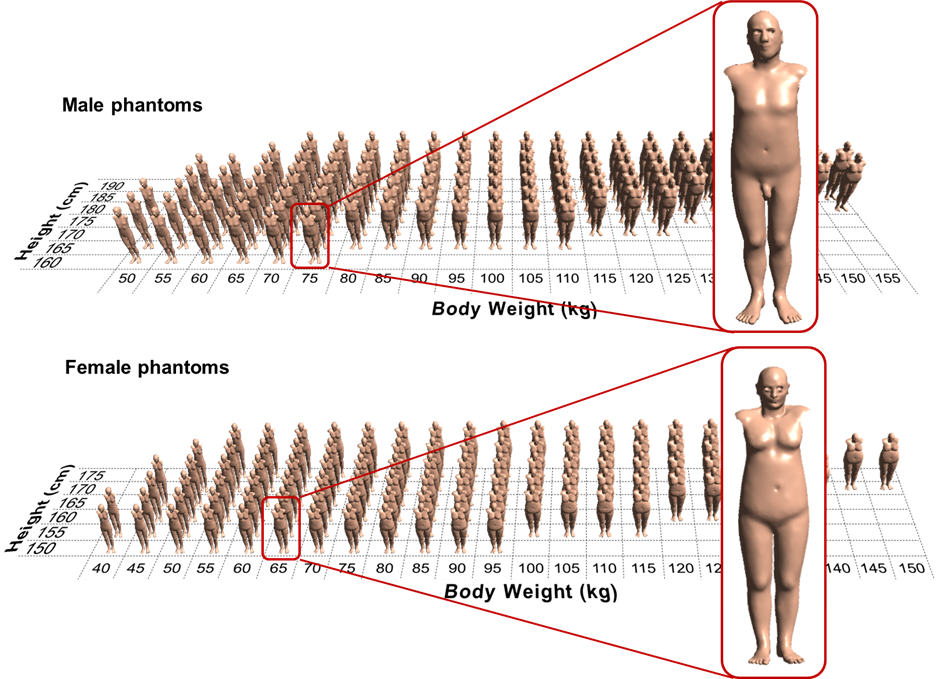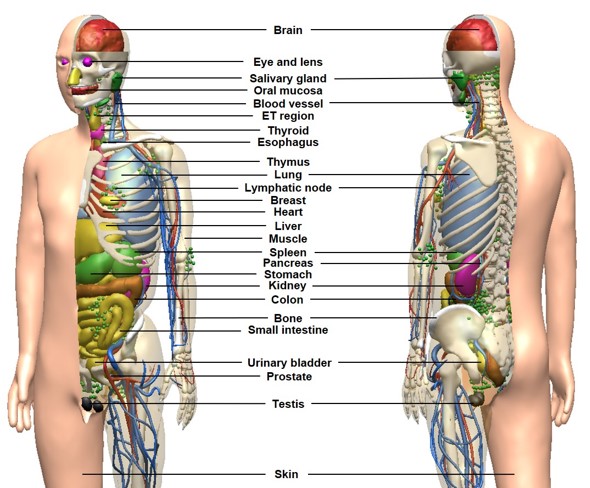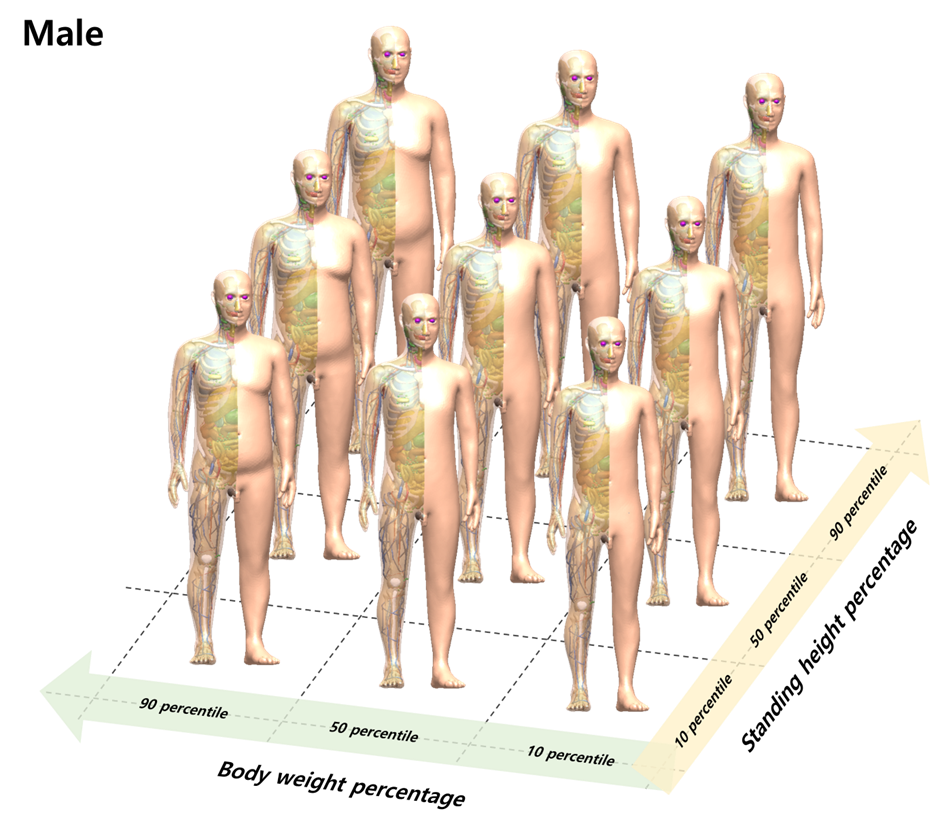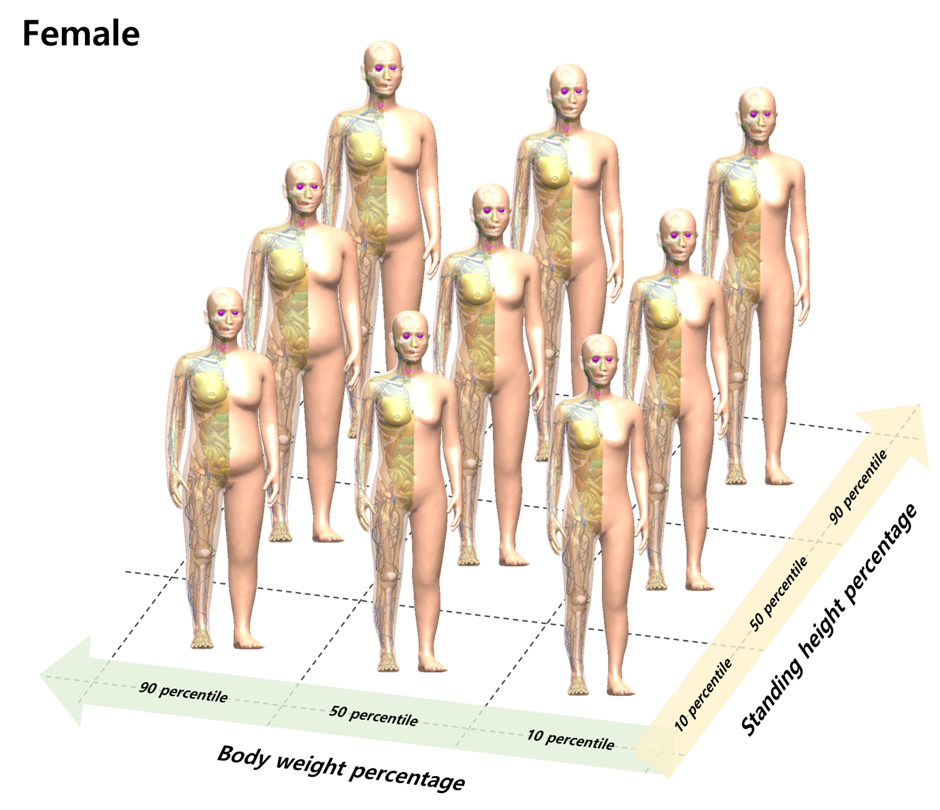ICRP adult mesh-type reference computational phantoms (MRCPs)
These phantoms are the next generation of ICRP adult male and female reference phantoms in a mesh format that will replace those of ICRP Publication 110 in a voxel format. The phantoms are the mesh counterparts of ICRP-110 phantoms, overcoming the dosimetric limitations coming from the finite voxel resolutions and the nature of the voxel format. The phantoms include all the source and target organs and tissues required for the calculation of the effective dose, including micrometer-thick regions in the alimentary and respiratory tract organs, skin, eyes, and urinary bladder, significantly improving the accuracy of the dose calculation. In addition, the phantoms are highly deformable and thus can be used to create phantoms of various body sizes and postures reflecting the specificity of the exposed individuals.
Notice: The package for the adult MRCPs is currently distributed by ICRP (Link). Therefore, it cannot be downloaded from the current website.
ICRP pediatric mesh-type reference computational phantoms (MRCPs)
These phantoms are the next generation of ICRP pediatric (newborn, 1-, 5-, 10-, and 15-year-old male and female) reference phantoms in a mesh format that will replace those of ICRP Publication 143 in a voxel format. The phantoms are the mesh counterparts of ICRP-143 phantoms, overcoming the dosimetric limitations coming from the finite voxel resolutions and the nature of the voxel format. The phantoms include all the source and target organs and tissues required for the calculation of the effective dose, including micrometer-thick regions in the alimentary and respiratory tract organs, skin, eyes, and urinary bladder, significantly improving the accuracy of the dose calculation. In addition, the phantoms are highly deformable and thus can be used to create phantoms of various body sizes and postures reflecting the specificity of the exposed individuals.
Notice: The package for the pediatric MRCPs is currently distributed by ICRP (Link). Therefore, it cannot be downloaded from the current website.
ICRP pregnant-female mesh-type reference computational phantoms (MRCPs)
These phantoms represent the first ICRP pregnant-female (fetal ages at 8, 10, 15, 20, 25, 30, 35, and 38 weeks) reference phantoms, developed in a tetrahedral volume mesh format. Each phantom consists of maternal and fetus phantoms. The maternal phantoms, as well as the 35- and 38-week fetal phantoms, include all the source and target organs and tissues required for the calculation of the effective dose, including micrometer-thick regions in the alimentary and respiratory tract organs, skin, eyes, and urinary bladder. The 8- to 30-week phantoms reflect organogenesis and include most of the target and source organs and tissues required for the calculation of effective dose. These phantoms are highly deformable and thus can be used to create phantoms of various body sizes and postures reflecting the specificity of the exposed individuals.
Notice: The package for the pediatric MRCPs is currently distributed by the current website, but the authority will expire after it begin to be officially distributed by the ICRP.
Percentile-specific computational phantoms based on ICRP adult mesh-type reference computational phantoms (MRCPs) (male: 9, female: 9)
These phantoms were extended from ICRP adult MRCPs taking their high deformability, and represent 10th, 50th, and 90th percentiles of standing height and body weight in Caucasian population. The phantoms were adjusted to match the 12 anthropometric parameters, including the standing height and body weight, derived from the survey data and anthropometric software, and the internal organs and tissues were scaled to match the lean body mass which is the parameter highly correlated to their masses. The phantoms, which are based on the ICRP adult MRCPs, retains all the advantages of the ICRP adult MRCPs such as the definition of the micron-scale regions and the accuracy of the dose calculation.
Body-size-dependent adult phantom library based on ICRP adult mesh-type reference computational phantoms (MRCPs) (male: 108, female: 104)
This phantom library is an extended version of the percentile-specific phantoms. The phantoms were developed from ICRP adult MRCPs by applying an in-house program, and includes 108 adult male and 104 adult female phantoms in different standing heights and body weights, covering most body sizes representative of Caucasian and Asian populations. The phantoms were adjusted to match the 12 anthropometric parameters, including the standing height and body weight, derived from the survey data and anthropometric software, and the internal organs and tissues were scaled to match the lean body mass which is the parameter highly correlated to their masses. The phantoms, which are based on the ICRP adult MRCPs, retains all the advantages of the ICRP adult MRCPs such as the definition of the micron-scale regions and the accuracy of the dose calculation.
Body-size-dependent arms-raised and arms-removed adult phantom library based on arms-down adult phantom library (male: 108, female: 104)
Arms-raised and arms-removed phantom libraries are an extended version of the body-size-dependent adult phantom library, which is in an arms-down posture. These libraries were developed for use in computed tomography (CT) dose evaluations. The arms-raised and arms-removed phantom libraries were constructed by raising or deleting the arms of the phantoms in the arms-down phantom library using an in-house program. These libraries respectively comprise 108 adult male and 104 adult female phantoms.
Body-size-dependent pediatric phantom library based on ICRP pediatric mesh-type reference computational phantoms (MRCPs) (male: 356, female: 281)
The pediatric phantom library was developed from ICRP pedaitric MRCPs by applying an in-house program and includes 331 male and 281 female phantoms in different standing heights and body weights, covering a wide range of body sizes for infants, children, and adolescents. The phantoms were adjusted to match the 12 anthropometric parameters, including the standing height and body weight, derived from the survey data and anthropometric software, and the internal organs and tissues were scaled to match the lean body mass which is the parameter highly correlated to their masses. The phantoms, which are based on the ICRP pedaitric MRCPs, retains all the advantages of the ICRP MRCPs such as the definition of the micron-scale regions and the accuracy of the dose calculation.
Posture-dependent computational phantoms based on ICRP adult mesh-type reference computational phantoms (MRCPs) (bending, kneeling, sitting, squatting, and walking)
These phantoms were extended from ICRP adult MRCPs taking their high deformability, and represent five non-standing postures that radiation workers mainly take (i.e., walking, sitting, bending, kneeling, and squatting). The phantoms were deformed by using a systematic posture-change method based on an as-rigid-as-possible (ARAP) shape-deformation algorithm and motion-capture technology, and the organ/tissue masses of the phantoms are consistent with those of the MRCPs. The phantoms, which are based on the ICRP adult MRCPs, retains all the advantages of the ICRP adult MRCPs such as the definition of the micron-scale regions and the accuracy of the dose calculation.
Mesh-type reference Korean phantoms (MRKPs)
These phantoms are the most advanced and newest Korean adult male and female reference phantoms in a mesh format, having all the advantages of ICRP MRCPs (e.g., definition of the micron-scale regions, accuracy of the dose calculation, and high deformability). The phantoms well reflect the anatomical and anthropometric characteristics of Korean adults and were developed using very high-quality 3-D models and medical images provided by various Korean governmental agencies. Considering the small anatomical and anthropometric differences between Asian countries, especially northeastern Asian countries, these phantoms can be used as reference phantoms representing the population of not only Korea but also other Asian countries.
Percentile-specific computational phantoms based on mesh-type reference Korean phantoms (MRKPs) (male: 9, female: 9)
These phantoms were extended from adult MRKPs taking their high deformability, and represent 10th, 50th, and 90th percentiles of standing height and body weight in Korean population. The phantoms were adjusted to match the 12 anthropometric parameters, including the standing height and body weight, derived from the survey data and anthropometric software, and the internal organs and tissues were scaled to match the lean body mass which is the parameter highly correlated to their masses. The phantoms, which are based on the adult MRKPs, retains all the advantages of the adult MRKPs such as the definition of the micron-scale regions and the accuracy of the dose calculation.

Tetrahedral reference Korean man (THRK-Man)
This phantom is the first computational human phantom in a tetrahedral-mesh format that was directly implemented in the Monte Carlo radiation transport code. Although the phantom includes only some, but not all, of the organs and tissues required for the calculation of the effective dose, the computation speed of the phantom is fast due to the small number of tetrahedra. Unlike the other mesh phantom series, this phantom consists only of the male phantom.

High-definition reference Korean voxel phantoms (HDRK-Man and HDRK-Woman)
These phantoms are the first Korean whole-body computational human phantoms in a voxel format that were directly implemented in the Monte Carlo radiation transport code. The phantoms were constructed using high-resolution color photographic images obtained by serially sectioning the Korean adult cadavers.
References:

